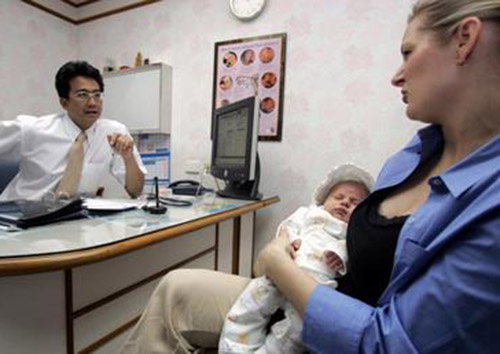Millions are willing to travel for cheaper cosmetic treatments. Dr. Neil Lunt discusses the risks and benefits Asian countries are facing as they progress into becoming the ‘hub’ of medical tourism.
AsianScientist (Feb. 18, 2014)
Medical tourism in Asia is booming. People from both Asia and the West are being attracted to cities and ‘hubs’ of medical excellence in a number of countries, such as Malaysia, Thailand, India, Singapore, Taiwan and South Korea. This tourism is a reversal of medical travel’s historic trend of being from low- to high-income countries. But the travel for cheaper treatments, including cosmetic, dental and transplantation surgery, has risks as well as benefits for the host countries.
Surgical techniques and patient safety knowledge have spread alongside the circulation of clinicians with overseas experience. This has led to the internationalization of techniques previously confined to Western nations.
Medical tourism across Asia has developed customer care strategies and large facilities akin to corporate five-star hotels — with strong clinical specialism. And countries seeking to develop medical tourism have the option to grow their own health service or form partnerships with large multinational players.
This development — effectively the internationalization of private healthcare aimed at travelling patients — has seen national governments promote their countries’ services.
National governments anticipate many benefits from medical tourism. There are financial benefits generated from health services and associated visitor spending. Human resource benefits can be gained by using medical tourism to attract back health workers who have emigrated — reversing the ‘brain drain.’
Positive spillovers may include the expansion of health-sector infrastructure and also roads and telecommunications. Equity benefits are potentially created by hospitals cross-subsidizing care for domestic patients, or helping to fund capital investment. Capital investments, such as MRI scanners, can then be used by all patients in the hospital or health system. And finally, there are symbolic dividends — ascension into the elite club of trading nations through domestic high-tech service industry development.
So do these anticipated benefits occur? The truth is that we simply do not have enough data on country indicators.
The involvement of transnational corporations may result in profits from medical tourism and ancillary activities being remitted overseas. While some evidence suggests medical tourism generates modest contributions to GDP, there are concerns about human resource migration to the private sector, with professionals lured by better salaries and work opportunities. It is possible resources will be taken away from the domestic population and instead invested into private hospitals, where foreign patients benefit from a high staff-to-patient ratio and expensive, state-of-the-art medical equipment. Such private activity is further supported by tax breaks and public subsidies for the training and education of health workers.
Another possibility is that investment is directed towards urban tertiary care rather than more appropriate domestic-population needs in rural primary care centers. The implications clearly vary depending on whether international patients are using spare capacity or competing with domestic patients.
But there is a curious gap in research and policy analysis. System-level evaluation of medical tourism policy and impact is absent. There is also a lack of independent government-funded work examining the pros and cons of medical tourism, and how benefits are distributed across the population. Medical tourism initiatives are launched as national policy platforms with much fanfare. But it becomes difficult to distinguish aspiration from reality given the veneer of country promotion strategies, provider rhetoric, and industry grandstanding. And one may question the political will that exists to grapple with the nature of system-level impacts.
Deeper empirical understanding of these impacts could inform policy and the regulation or stimulation of private sector activities. This may include ways to ensure human resources are made available to the domestic population — benefitting the domestic health system. Certainly medical tourism has the potential to influence the distribution of healthcare resources to the poorer local population. But it remains to be seen whether universal health coverage in East Asian countries and medical tourism development can go hand in hand.
National strategies must understand the risks within medical tourist markets. It is necessary to engage with the evidence when considering the benefits and demand for medical tourism globally. There is no simple upward curve: travel to particular countries may be volatile, reflecting their own political, climatic and economic events. There are also shifts in consumer preferences and exchange rates.
To date there has been relatively limited success by medical tourist providers in tapping revenue streams from private and workplace insurance systems or outsourcing from western public health systems. It is difficult to ensure that regulatory interest and public investment is prevented from being captured by the private sector and that the interests promoting medical tourism development are adequately countered.
Medical tourism may benefit individual patients, treating clinicians and the private providers. But it is time to ask — do the benefits add up?
Dr. Neil Lunt is Reader in Social Policy and Public Sector Management at the University of York.
——
Source: East Asia Forum.
Disclaimer: This article does not necessarily reflect the views of AsianScientist or its staff.
source: http://www.asianscientist.com / Asian Scientist / Home> Editorials / February 18th, 2014


